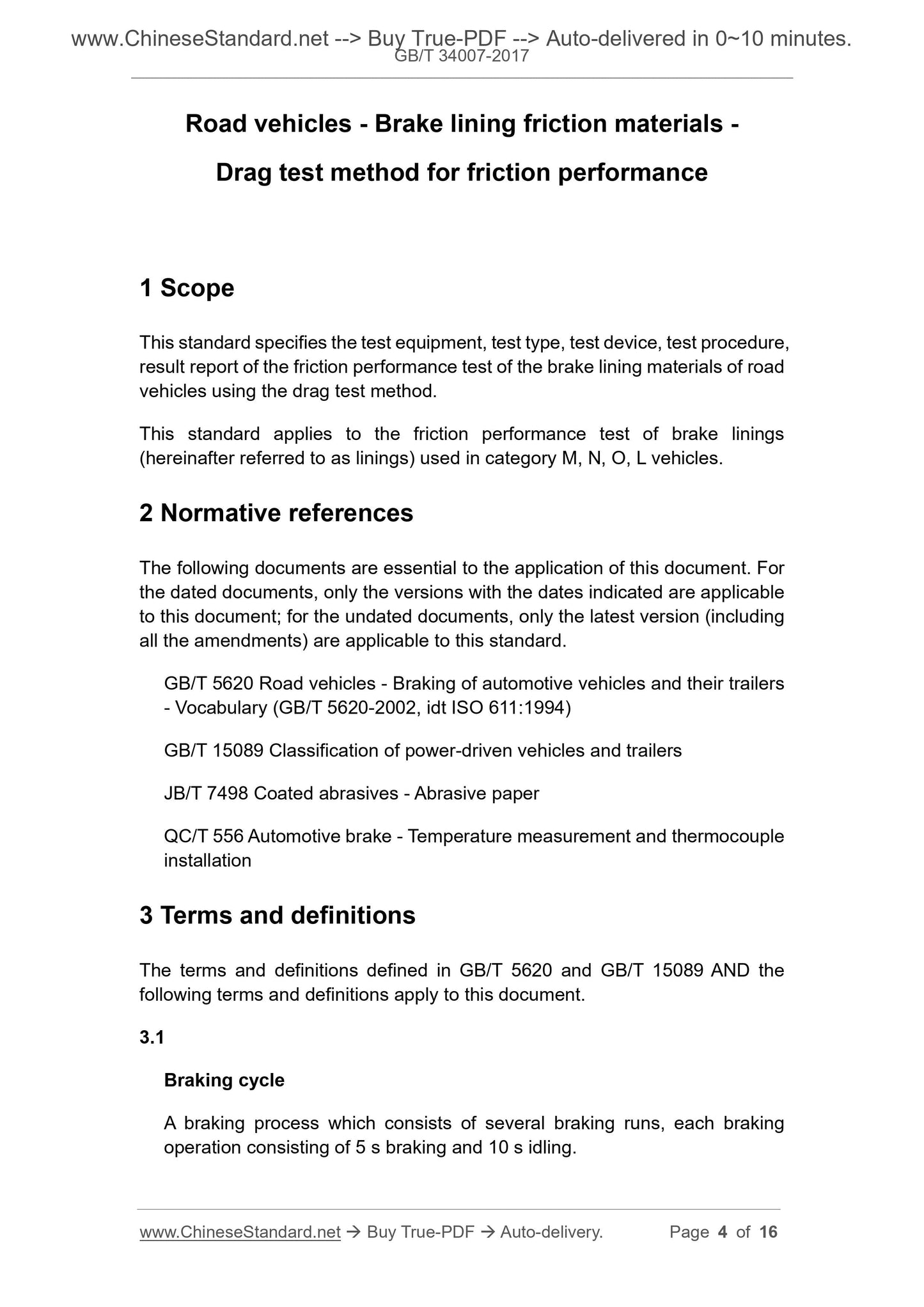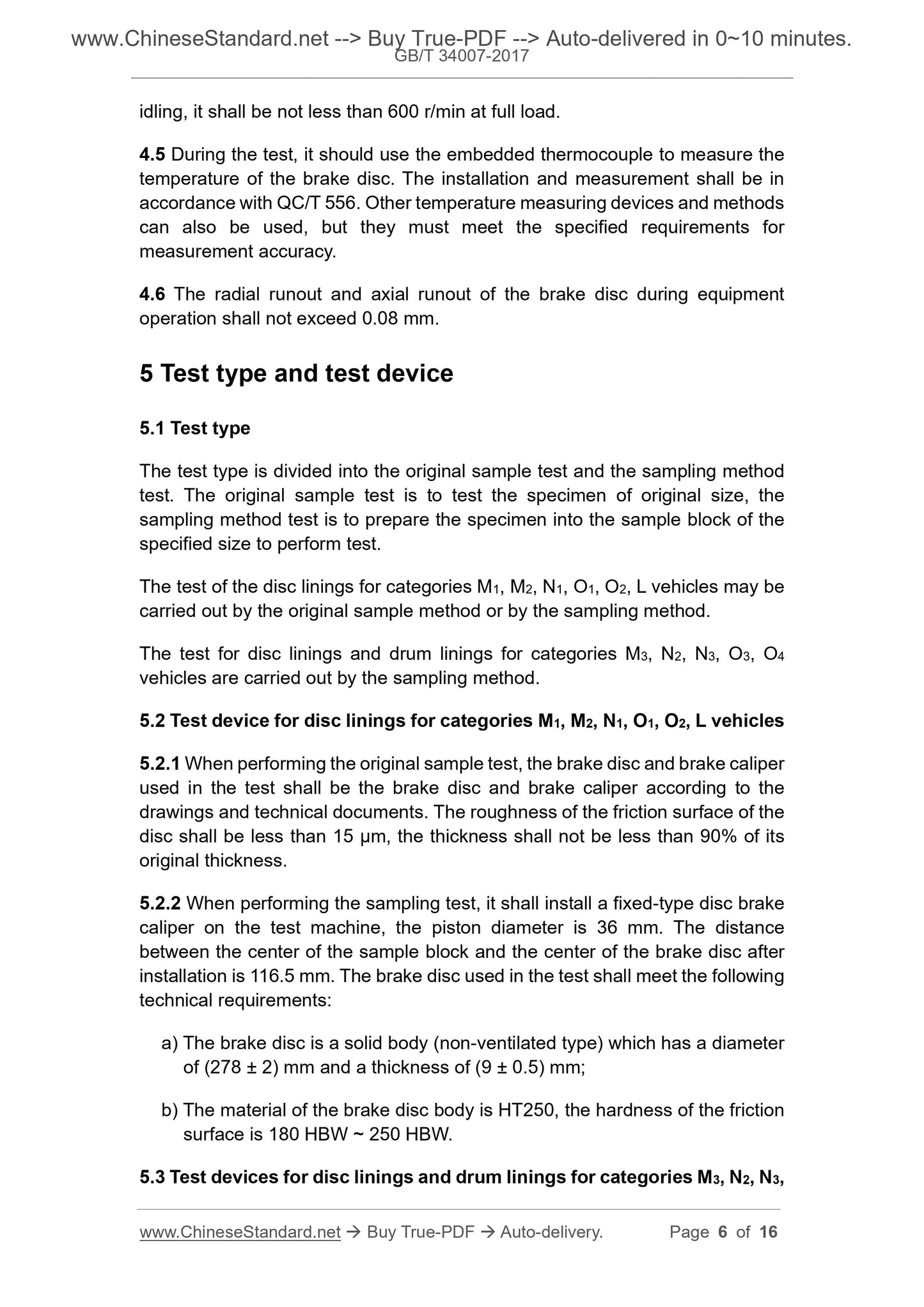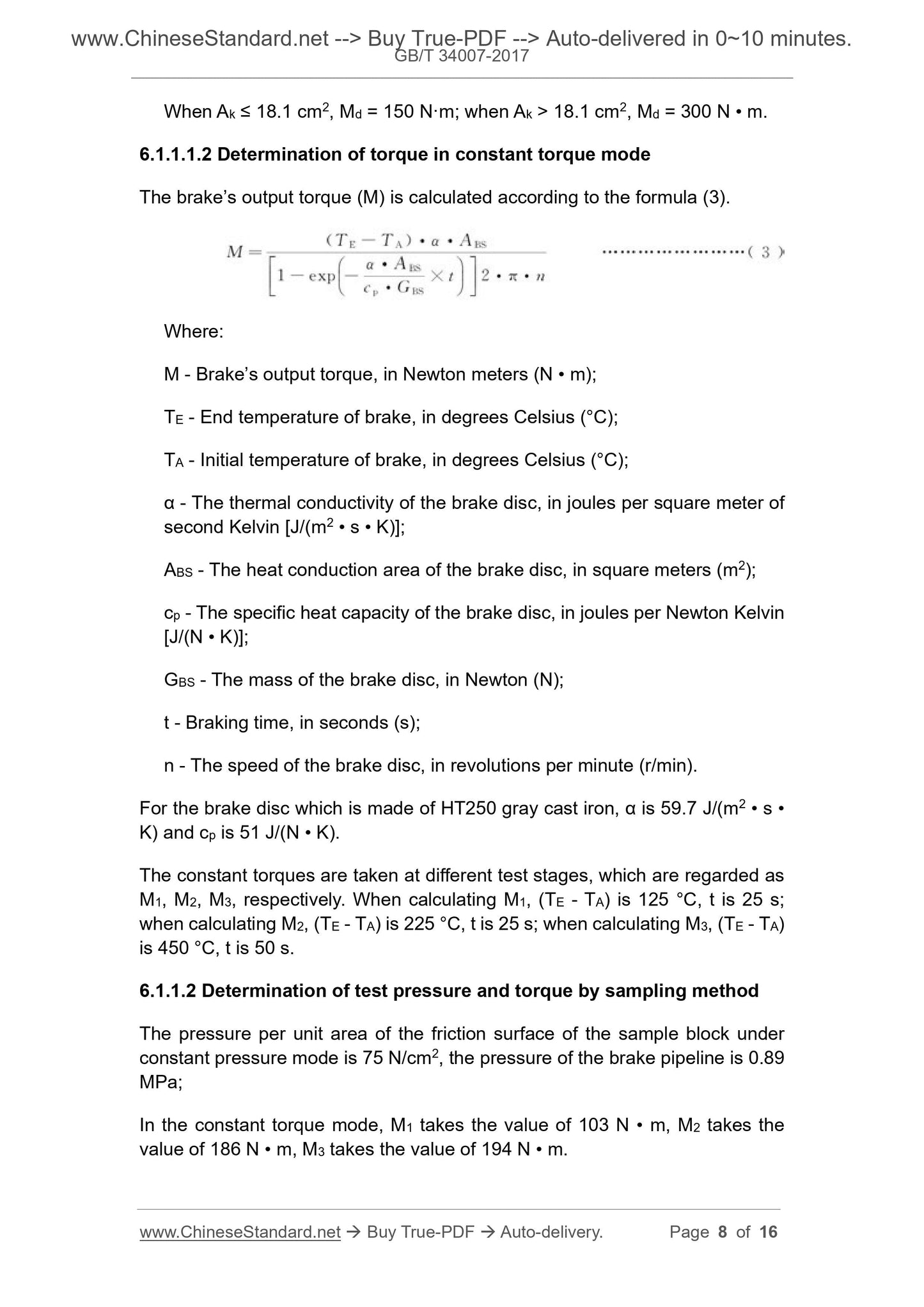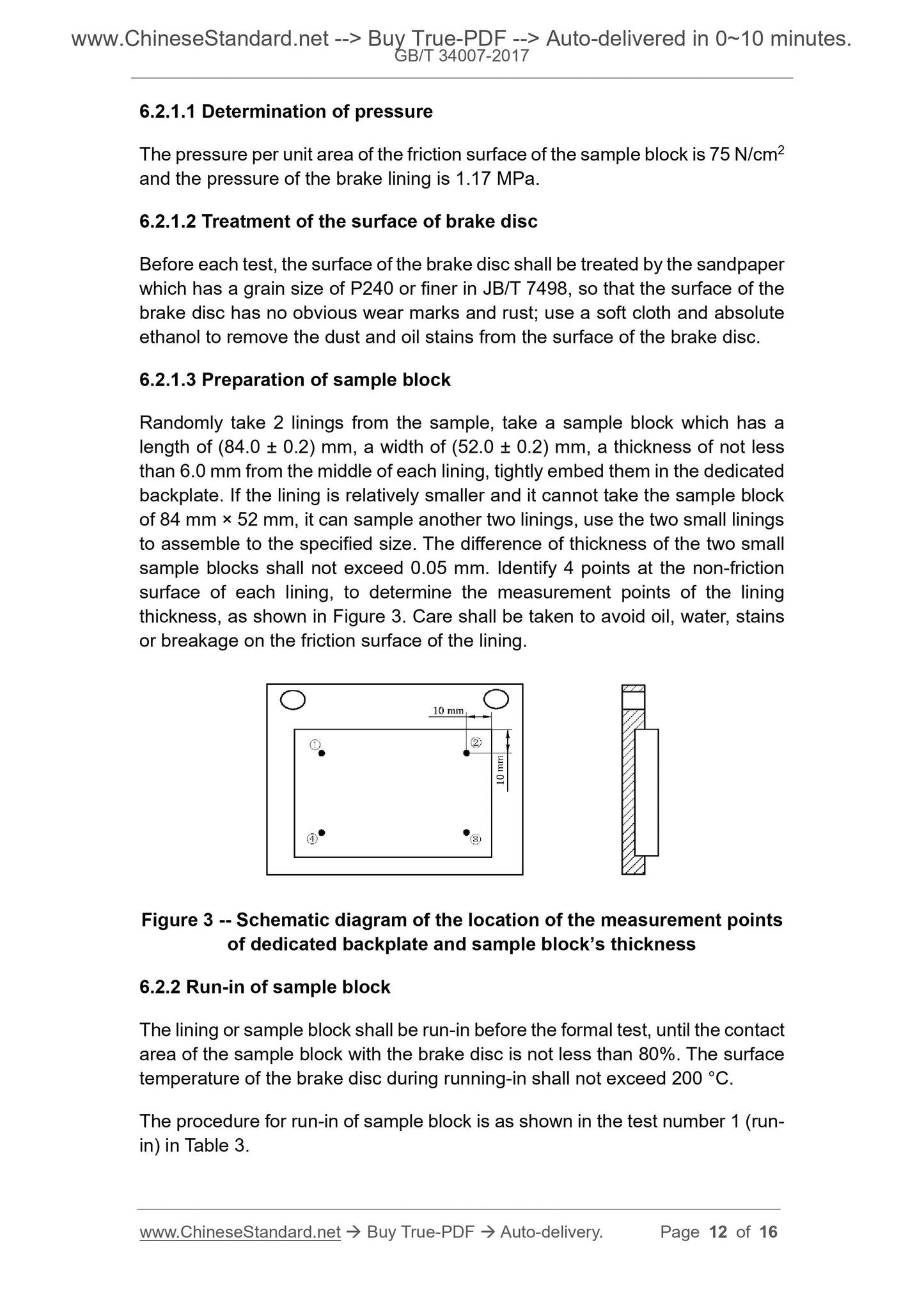1
/
of
6
www.ChineseStandard.us -- Field Test Asia Pte. Ltd.
GB/T 34007-2017 English PDF (GB/T34007-2017)
GB/T 34007-2017 English PDF (GB/T34007-2017)
Regular price
$145.00
Regular price
Sale price
$145.00
Unit price
/
per
Shipping calculated at checkout.
Couldn't load pickup availability
GB/T 34007-2017: Road vehicles - Brake lining friction materials - Drag test method for friction performance
Delivery: 9 seconds. Download (and Email) true-PDF + Invoice.Get Quotation: Click GB/T 34007-2017 (Self-service in 1-minute)
Newer / historical versions: GB/T 34007-2017
Preview True-PDF
Scope
This standard specifies the test equipment, test type, test device, test procedure,result report of the friction performance test of the brake lining materials of road
vehicles using the drag test method.
This standard applies to the friction performance test of brake linings
(hereinafter referred to as linings) used in category M, N, O, L vehicles.
Basic Data
| Standard ID | GB/T 34007-2017 (GB/T34007-2017) |
| Description (Translated English) | Road vehicles - Brake lining friction materials - Drag test method for friction performance |
| Sector / Industry | National Standard (Recommended) |
| Classification of Chinese Standard | Q69 |
| Classification of International Standard | 43.040.40 |
| Word Count Estimation | 14,121 |
| Date of Issue | 2017-07-12 |
| Date of Implementation | 2018-06-01 |
| Issuing agency(ies) | General Administration of Quality Supervision, Inspection and Quarantine of the People's Republic of China, Standardization Administration of the People's Republic of China |
Share











